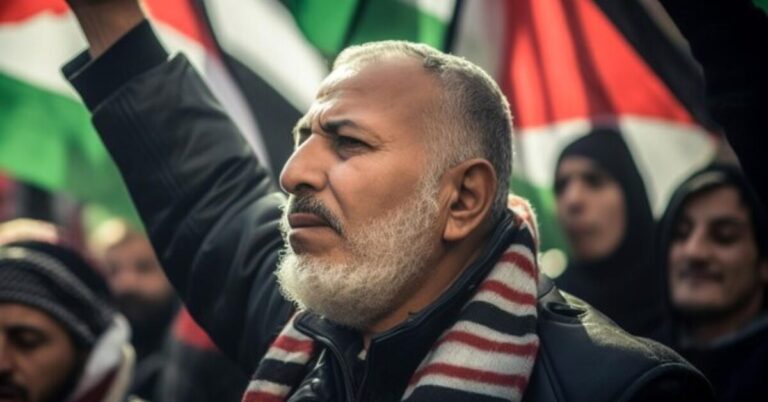Israeli Prime Minister Benjamin Netanyahu recently addressed the ongoing conflict in Gaza, defending Israel’s military actions amidst growing international scrutiny and widespread protests. As he spoke, demonstrators gathered outside the US Congress, voicing their opposition to the violence and calling for an immediate ceasefire. This article delves into the key points of Netanyahu’s defense, the broader context of the Gaza conflict, and the reaction from protesters in Washington D.C.
Netanyahu’s Defense of the Gaza War
Netanyahu’s speech aimed to justify Israel’s military operations in Gaza, emphasizing the nation’s right to self-defense against the militant group Hamas. He argued that the airstrikes and other military actions were necessary to neutralize threats posed by rockets launched from Gaza into Israeli territory. Netanyahu stated, “Our operations are focused on degrading Hamas’s capabilities and ensuring the safety of our citizens.”
Key Points of Netanyahu’s Argument
- Self-Defense: Netanyahu underscored Israel’s right to defend itself from terrorist attacks, highlighting the thousands of rockets fired by Hamas toward Israeli cities and towns.
- Targeting Hamas: He stressed that the Israeli Defense Forces (IDF) are specifically targeting Hamas infrastructure, including tunnels, weapons storage sites, and command centers, to cripple the group’s ability to launch attacks.
- Minimizing Civilian Casualties: Netanyahu insisted that Israel is making significant efforts to avoid civilian casualties, using precision strikes and warning civilians to evacuate targeted areas.
The Broader Context of the Gaza Conflict
The recent escalation in Gaza is part of a long-standing and complex conflict between Israel and Palestinian groups, particularly Hamas. This latest outbreak of violence has resulted in significant casualties and destruction in Gaza, drawing widespread condemnation and calls for peace from the international community.
Historical Background
The Israel-Gaza conflict has deep historical roots, with tensions dating back to the mid-20th century. Key events, such as the establishment of the state of Israel in 1948, the subsequent Arab-Israeli wars, and the ongoing Israeli occupation of Palestinian territories, have fueled animosity and periodic violence.
Recent Developments
The current conflict escalated after clashes in Jerusalem, particularly around the Al-Aqsa Mosque, a site of significant religious importance for both Muslims and Jews. These clashes triggered a series of retaliatory actions, culminating in the intense bombardment of Gaza by Israeli forces and rocket attacks by Hamas.
Protests Outside US Congress
As Netanyahu defended Israel’s actions, hundreds of protesters gathered outside the US Capitol, demanding an end to the violence and urging the US government to intervene more forcefully to broker a ceasefire. The demonstration featured a diverse group of activists, including Palestinian Americans, human rights advocates, and members of the Jewish community who oppose the Israeli government’s policies.
Voices from the Protest
- Humanitarian Concerns: Protesters highlighted the humanitarian crisis in Gaza, where civilians have borne the brunt of the conflict. They called for immediate aid and support for the affected populations.
- US Foreign Policy: Many demonstrators criticized US foreign policy, arguing that the substantial military aid provided to Israel contributes to the perpetuation of the conflict. They urged lawmakers to reconsider this support and promote a balanced approach to peace.
- Solidarity with Palestinians: The protest also served as a platform for expressing solidarity with Palestinians, emphasizing their right to self-determination and condemning what they view as disproportionate use of force by Israel.
The International Response
The international community has been vocal in its response to the Gaza conflict, with numerous countries and organizations calling for an immediate cessation of hostilities. The United Nations and various human rights groups have expressed concern over the rising civilian toll and the humanitarian crisis unfolding in Gaza.
Diplomatic Efforts
Efforts to mediate a ceasefire have intensified, with Egypt, Qatar, and other regional actors playing key roles in facilitating negotiations between Israel and Hamas. Despite these efforts, finding a lasting resolution to the conflict remains challenging due to the involved parties’ deep-seated mistrust and conflicting objectives.
Calls for Accountability
International human rights organizations have called for investigations into potential violations of international law by both sides. They emphasize the need for accountability to prevent future escalations and to address the underlying issues driving the conflict.
Conclusion
Netanyahu’s defense of the Gaza war underscores the complexities and deeply entrenched positions that characterize the Israel-Palestine conflict. As protesters outside the US Congress and worldwide call for peace and justice, the path to a sustainable resolution remains fraught with challenges. The international community’s role in mediating and supporting peace efforts is crucial in bringing an end to the cycle of violence and ensuring a future where both Israelis and Palestinians can coexist in security and dignity.


